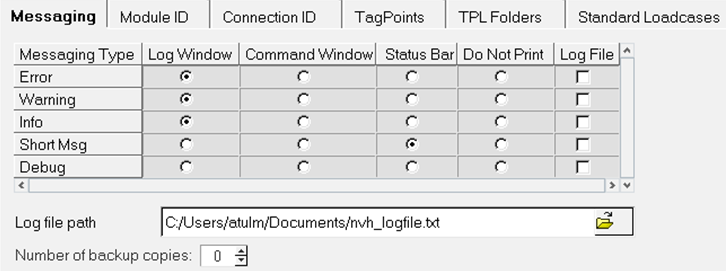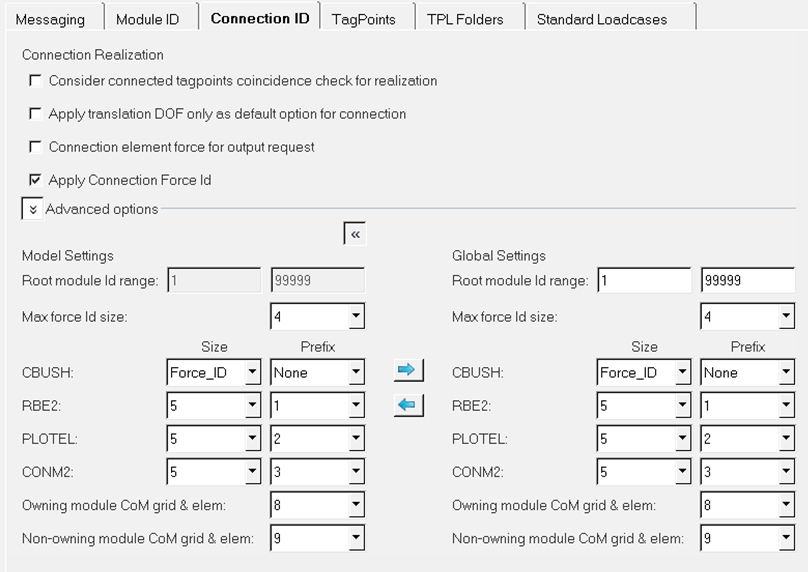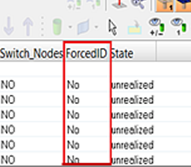NVH Preferences
Keep all of the default configuration options and store user preferences.
NVH Preferences can also be used for all user messages in case you want to switch on the .log file creation and provide the path where it will be saved.
From the menu bar, click when the NVH user profile is loaded.
Messaging

Module ID

Connection ID
Preferences to force IDs the numbering pattern for connectors, so that the connection elements created after realization of the connectors fall in the defined numbering pattern. The numbering pattern currently followed is as per a typical customer case. These values may be entered in the NVH Preferences dialog in the Connection ID tab.
- To check the tagpoint coincidence during Connection Realization. This creates the necessary elements on realization of connections based on the tagpoint coincidence check.
- To apply translational only DOFs for connection realization. This creates the elements with properties only in translational direction for all connections.
- To request for connection element force output.
- Apply connection force ID.

- Max force Id size
- Maximum number of digits possible to be entered by you in the Force ID entry of the States tab in the Connection Browser.
- Size
- Number of digits of the connection ID after realization.
- Prefix
- Digit to be added as prefix to connection element ID.




TagPoints
- Tolerance for node ID match during rendering
- The tolerance used for rendering the tagpoints. If the distance between tagpoints in the XML database and the FE database is more than the mentioned tolerance in the preference, tagpoints are not rendered and a message will appear.
- Global locked tagpoint Id range
- The range for locking the tagpoints outside of the module ID range.Figure 8.

TPL Folders
- Frequency Response
- Normal Modes
- LP
- Full Deck
- ConnectionFigure 9.

Standard Loadcases
